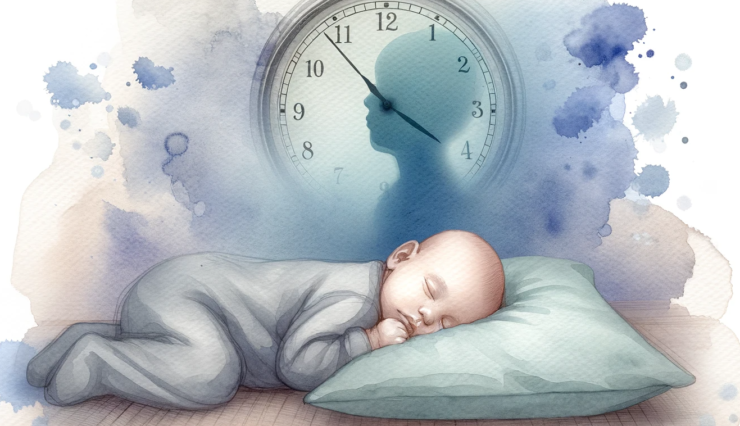Newborn babies often don’t have a clear sense of night and day, which is why their sleep patterns can seem erratic and unpredictable.
In the first few weeks of life, newborns lack a fully developed circadian rhythm, the body’s internal clock regulating sleep and wakefulness over a 24-hour period. External cues like light and darkness influence this rhythm, but it is still maturing in newborns.((https://www.bcchr.ca/healthysleepforkids/newborns))
Here’s a closer look at why this happens and how it changes over time:
- Sleep Cycles: Newborns have shorter sleep cycles than adults. They spend more time in rapid eye movement (REM) sleep, a lighter form of sleep, making them more prone to frequent awakenings. This is crucial for their rapid brain development.((https://www.betterhealth.vic.gov.au/health/healthyliving/typical-sleep-behaviour-nb-0-3-months))
- Hunger and Developmental Needs: Newborns need to feed frequently, often every 2-3 hours, including during the night. Their small stomachs can’t hold much, so they wake up when they’re hungry. Additionally, the brain development and physical growth that occur during sleep are significant in the early weeks, necessitating frequent sleep periods.((https://www.health4mom.org/why-is-your-baby-hungry-all-the-time/)),((https://raisingchildren.net.au/babies/sleep/understanding-sleep/sleep-2-12-months))
- Gradual Adjustment: Over time, usually by around 3-6 months, most babies develop a more regular sleep pattern. They start to sleep longer at night as their circadian rhythm becomes more aligned with the day-night cycle. External cues like light exposure during the day and a dark, quiet environment at night can help reinforce this rhythm.((https://www.happiestbaby.com/blogs/baby/day-night-confusion))
- Variation Among Infants: It’s important to note that there is considerable variation in how and when babies develop regular sleep patterns. Factors such as temperament, feeding patterns, and the environment can all play a role.((https://www.stanfordchildrens.org/en/topic/default?id=newborn-sleep-patterns-90-P02632)),((https://www.pregnancybirthbaby.org.au/sleep-patterns-for-babies))
Parents and caregivers can help facilitate the development of a more regular sleep pattern by establishing a consistent bedtime routine, ensuring the baby is exposed to natural light during the day, and creating a conducive sleeping environment at night. However, patience is key, as it takes time for babies to adapt to the 24-hour cycle.






































Add comment